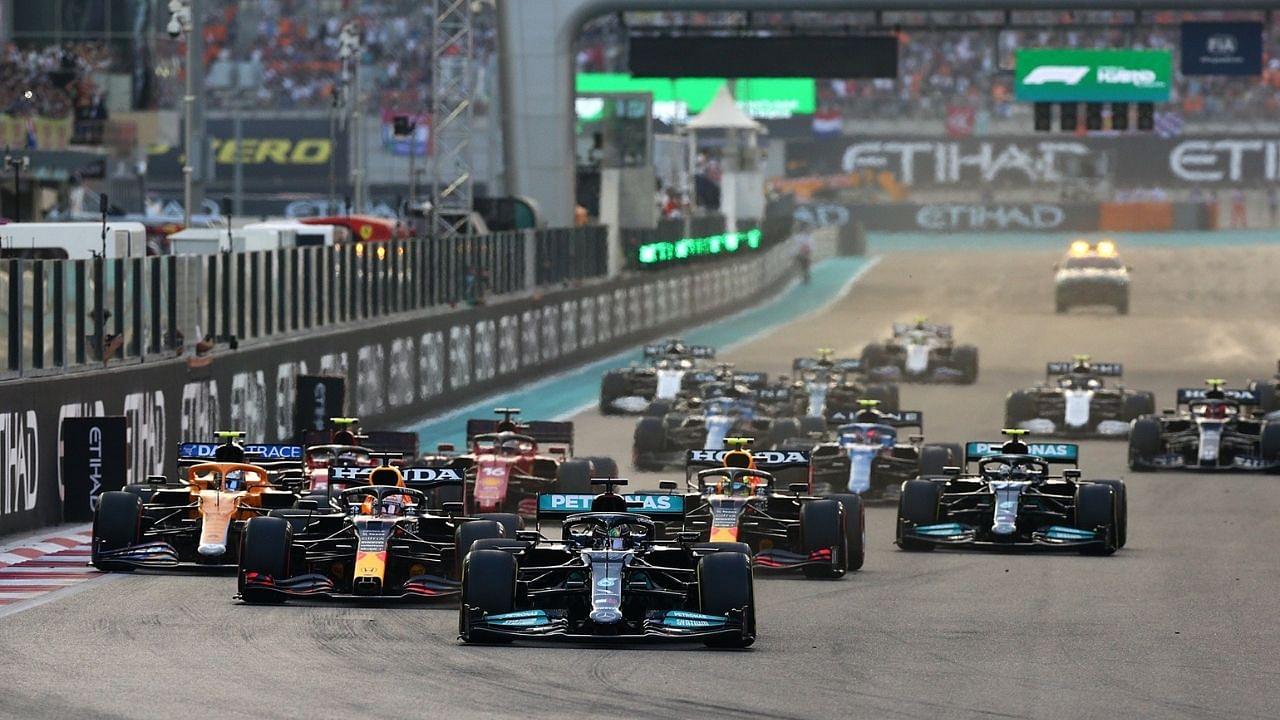Formula 1 is a racing spectacle and the production that goes behind capturing a race is nothing less than a technical marvel.
Formula 1 is the pinnacle of motorsport as it uses top-notch technologies in the world to create the most attractive racing experience in a single seater.
A lot goes behind the creation of an F1 race to keep the fans on the edge of their seats and lure the attention of the spectators. From track to car design, high speed corners to strategies, everything in the sport calls for hi-tech equipments.
Helmet cameras have come a long way in F1 😅 pic.twitter.com/7jSf2wb6gg
— ESPN F1 (@ESPNF1) April 27, 2022
Same goes behind the filming of the race for the viewers. The filming of an F1 race includes swooping helicopter shots, on-board cameras, helmet cameras and several other stationary cameras around the track.
Let’s delve into the details of how these cameras give an immersive experience to the viewers by capturing tiny details of everything.
Also Read: Cars Ferrari star owns in his $7 million worth garage
Moving cameras in Formula 1
First in the list is helicopter cameras hovering around the tracks. This might probably be the most expensive camera on the track. Whether to capture an establishing shot of the circuit or track the action of all the cars on the track, helicopter cameras ensure to give the viewers an immersive experience.
As the helicopter keeps moving, the cameras onboard uses an advanced stabilizer to eliminate any bumps in the shot. The camera is connected to a control panel which is operated by a professional who sits next to the pilot.
The operator and the pilot work as a team to get the perfect angle by constantly communicating where the helicopter needs to be to give the audience the context of the race.
The next in line are onboard cameras. These cameras capture some of the most exciting events of the race. As per technical regulations, there has to be five onboard cameras on each cars.
Two of these cameras are placed in the T-shaped box right above the driver. One of these is pointed at the front while the other one captures the rear of the car.
The remaining ones are placed on the nose and the chassis. Fun fact is that combined together these cameras weigh less than four pounds.
Then finally comes the cable cam. This camera is located between the pit lane and the finishing straight. It is attached to a set of wires that can move at over 130km/h.
These cams are mainly used for tracking the cars as they enter or leave the pitlane. It also captures the details of the car before they storm out after the lights out. Such cameras are commonly known as the camcat and are also used in the olympics.
Also Read: When fan drove Lewis Hamilton’s 2008 title winning McLaren F1 Car
Types of Stationary Cameras
One of the most important cameras in t covering F1 is the trackside camera. There are about 25 of these cameras around the track. Although this number can vary from track to track.
The trackside cameras help the viewers understand the location of the cars on the track. Without these cameras it would be impossible to cover the race. Especially when there are multiple things happening around the track.
Combined with the trackside cameras are the hi-tech slow motion cameras. These are positioned on the key parts of the circuit. The shots of these cameras are strictly used to replay the footage and give the audience a detailed picture of a certain incident on the track.
F1 uses a super advanced slo motion camera than can shoot up to 5850 frames per second.
Then comes the specialty cameras that are mounted around the circuit. These include several cameras that are embedded in the track, five roaming cameras in the pitlane to capture the activity.
There are a handful of specialty cameras that capture the crowd reaction from the pavilion and few more cameras that capture pit stops.
Interestingly, there’s one more camera that is mounted at the top of a scissor lift. These are usually placed at the end of the opening straight.
To operate these an operator goes at the top of the scissor lift. It captures a unique shot as the cars race down to the first turn of the race.
In total there are about 126 different cameras filming a race in one grand prix weekend.
Also Read: Who is dating two-time F1 champion in 2022?



